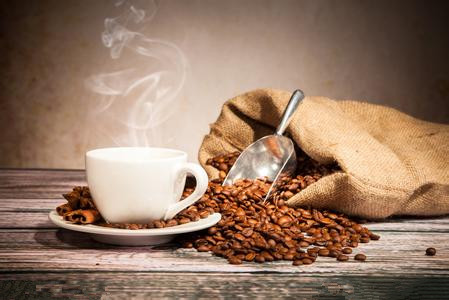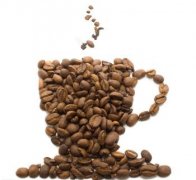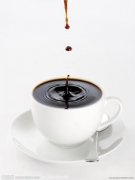Coffee is healthier than champagne Coffee and health

Champagne is a fantastic place of natural beauty. The name comes from the Latin campus and campania or field. In France it used to be 'Champaign' but now it is 'Champagne'. Records indicate that Pliny began growing grapes in Man as early as 79 AD. The Romans developed vineyards and created the art of winemaking, building cellars called crayeres more than 300 feet deep on chalk slopes and storing hundreds of thousands of champagne. In 92 AD, Emperor Domitian ordered the uprooting of most vineyards in France to avoid competition with the wines of the Italian peninsula, including those of Champagne. Viticulture in Champagne was kept secret for centuries until Emperor Probus lifted the ban and ordered the vineyards to be redeveloped. Since then, Champagne has enjoyed a reputation in Europe for its wines.
Until the late 17th century, only Burgundy wines could rival Champagne wines. Champagne wines began to dominate the export markets of the Low Countries (Netherlands, Belgium and Luxembourg), the traditional territory of Burgundy. By 1600, a war of words had broken out between Champagne and Burgundy, and the victors were doctors and poets who valued taste and natural health. Champagne winemakers began to look for and create a new wine, rather than imitating Burgundy. The new wine was carefully and painstakingly cultivated and not only unusual, but delicious, commented Vautere. Its uniqueness and novelty catered to the health and fashion trends of Paris and was welcomed by the export market. Champagne winemakers have since mastered the art of making light champagne from Pinot Noir grapes.
Champagne has been available in Britain for some time, but the new pale pink wine Vin Gris was not introduced until the early 1660s. St. Ephraim, a Louis XIV admirer, was ostracized by the king and fled to London, but soon became an advocate of English fashion. Saint Evremont loved all champagne and shipped it to England after purchasing the right amount, which quickly made champagne fashionable in Britain. The earliest records of bubbly were also found during this period.
Early sparkling wine was invented accidentally by Frère Jean Oudart and Dom Pierre Pérignon. In France, most vin gris are fresh to drink. At that time, when transported abroad by barrel ship, the warm weather in spring would make the wine produce secondary fermentation on the way. Through trade with Spain and Portugal, cork was already commonly used in British ale, but this advanced method was not yet common in France. The new wine is bottled as soon as it arrives, which is adapted to the activity of the foam. This phenomenon has aroused academic and commercial interest in champagne. The earliest successful mastery of the technique of making "foam" in bottles was also due to the joint efforts of the monasteries of Pieri and Espere. Under the guidance of professional winemakers from both regions, Frère Jean Oudart (1654-1742) and Dom Pierre Pérignon (1639-1715) became the birthplace of pure, perfect natural sparkling wine. The two monasteries were less than two miles apart and probably consulted each other frequently. The principles of Champagne-making established by the two in the late 17th century are still very important today, including the method of mixing grapes grown in different vineyards to obtain perfect fine wines, the method of removing sediments from wines, and the replacement of hemp stoppers with wooden stoppers.
French monks were the first to make bottled sparkling wine. The method of making foam in bottles was invented by the monks and master winemakers of Frère Jean Oudart and Dom Pierre Pérignon, two monasteries in France. Champagne has a shorter growing season, so grapes need to be picked within the year, otherwise there is not enough time to ferment. Fermentation yeast converts sugar in grape juice into alcohol, but stops fermentation in cold winter temperatures. The monks invented a method of producing champagne by secondary fermentation, which was bottled until the following spring and produced sparkling champagne with carbonated bubbles.
In the next century and a half, this method of production basically did not make any progress. Wine growers in Champagne responded to the high demand for this sparkling wine, but no one dared to make a living on it because the production or reduction of bubbles in this wine was extremely unstable at the time. In 1834, André Julien wrote in his article "Wine and Topography" that the causes affecting the quality of foaming are strange and difficult to explain. The same wine taken out on the same day, put into the same cellar, placed in the same location, some produce the same, but high, bubbles at the same time in another location, some foam very little or not at all, may be at which door, or under which vent…all these uncertainties are so different and special that most experienced wine merchants cannot foresee and prevent them.
Another incident Julien described was a bottle explosion. Losing 15 -20% of wine is normal because of this accident, and sometimes even more than 40%. The following two innovations did not solve the problem of corks flying off, but they greatly improved the quality of champagne. Due to Champagne's northern location, grapes lack sufficient light during growth, so immature grapes make the wine taste very strong. It is common practice to add sugar to the wine at the end to soften it to suit the taste of the popular sweet wine. Renowned chemist Jean Antoine Chaptal advocated adding sugar to the fermentation process to increase alcohol content rather than adding sugar to the finished wine, which proved beneficial. Later, Parmentier discovered that adding sugar made from concentrated grape juice worked better than using sucrose. This discovery is conducive to improving the quality of the wine, but makes the bottle explosion problem more serious, due to the amount of sugar added to vary, the bottle breakage rate was as high as 80%.
Another landmark invention came in 1836, when a French pharmacist from Chalons-sur-Marne published a treatise on bottled fermentation, later called ré-induction Fran·ois, describing a method for measuring the residual sugar in wine. Ripe sweet grapes are known to produce wines with higher alcohol and carbon dioxide content, and the Fran·ois method determines how much sugar needs to be added to produce a specific volume of carbon dioxide and how much atmospheric pressure is produced in the bottle accordingly. This practice gave champagne a reliable degree, and after 1840 traditional still wine production was almost completely eliminated in Champagne due to the preference for sparkling wine.
The ensuing champagne boom lasted until the early 1990s. The taste of connoisseurs gradually began to lean towards dry champagne, which coincided with dated champagne made in 1842, 1846 and 1857, with only a small amount of syrup added and of very good quality.
On December 17, 1908, the definition of Viticole Champagne was officially recognized, and it underwent three years of political struggle and civil unrest, culminating in the resistance of grape growers in late 1911, which also led to the formulation of positive measures. At the time, the conflict focused on the import of cheap wine, which was shipped from the sunny south to Champagne by unscrupulous shippers and mixed with local champagne to deceive consumers. Growers and reputable shippers demand that these wines be sold separately from champagne. Trains of cheap wine and a large number of suspect cellars were destroyed by rioting people, which finally made adulteration illegal and stipulated that only grapes from Champagne could be used to make champagne.
Important Notice :
前街咖啡 FrontStreet Coffee has moved to new addredd:
FrontStreet Coffee Address: 315,Donghua East Road,GuangZhou
Tel:020 38364473
- Prev

Why can you feel a little sweetness when tasting black coffee?
Most people only taste bitter, sour and astringent coffee. In fact, raw coffee beans contain about 50.8% sugar. After baking at high temperature, most of the sugar will be converted into caramel. This caramel effect brings a unique tea brown to the coffee, forming a source of aroma and bitterness, while the remaining sugar leaves some sweetness. In addition, when roasting high-quality coffee beans,
- Next

Coffee is healthier than wine and beer the relationship between coffee and health
Benjamin Franklin once said that God loves us and wants us to be happy. Beer proves it. Happiness? That's for sure. But what about health? In the past, there were no sanitary facilities and people did not know to protect the cleanliness of water sources. Infectious diseases caused by drinking water were widespread, but it was believed empirically that the disease was no longer prevalent when drinking fermented beverages such as beer and red wine. Because it is believed that alcohol is harmful to people.
Related
- Beginners will see the "Coffee pull flower" guide!
- What is the difference between ice blog purified milk and ordinary milk coffee?
- Why is the Philippines the largest producer of crops in Liberia?
- For coffee extraction, should the fine powder be retained?
- How does extracted espresso fill pressed powder? How much strength does it take to press the powder?
- How to make jasmine cold extract coffee? Is the jasmine + latte good?
- Will this little toy really make the coffee taste better? How does Lily Drip affect coffee extraction?
- Will the action of slapping the filter cup also affect coffee extraction?
- What's the difference between powder-to-water ratio and powder-to-liquid ratio?
- What is the Ethiopian local species? What does it have to do with Heirloom native species?

